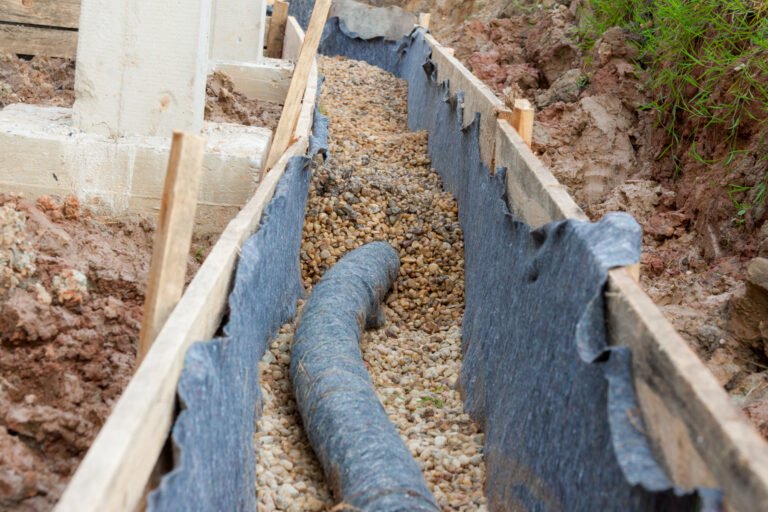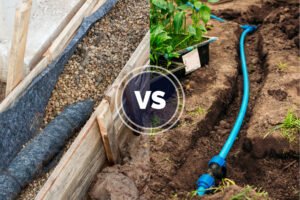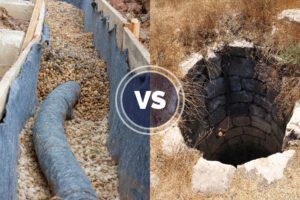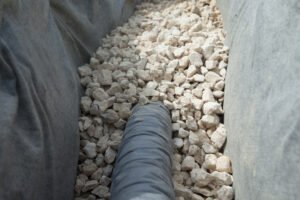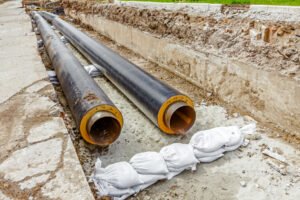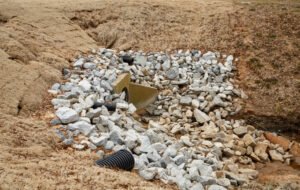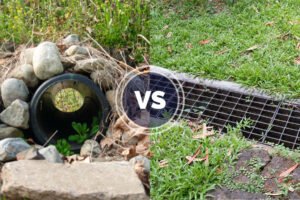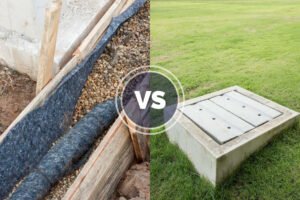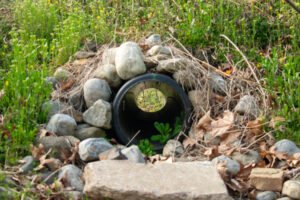French drains are preferred for their effective surface water drainage, but have you ever witnessed a smelly, clogged drain that just refuses to flow? Well, blocked drains are definitely a headache, and they not only look awful but might backflow right into your house.
And most of the times, a turbid french drain system is because of a faulty installation and slope. But what more can go wrong with a french drain? And what mistakes should you avoid while installing it?
Today, we’ll talk about the same mistakes, how to avoid them, and some hacks to restore your french drain system. So, let’s start rectifying!
What Is a French Drain? How Does It Work?
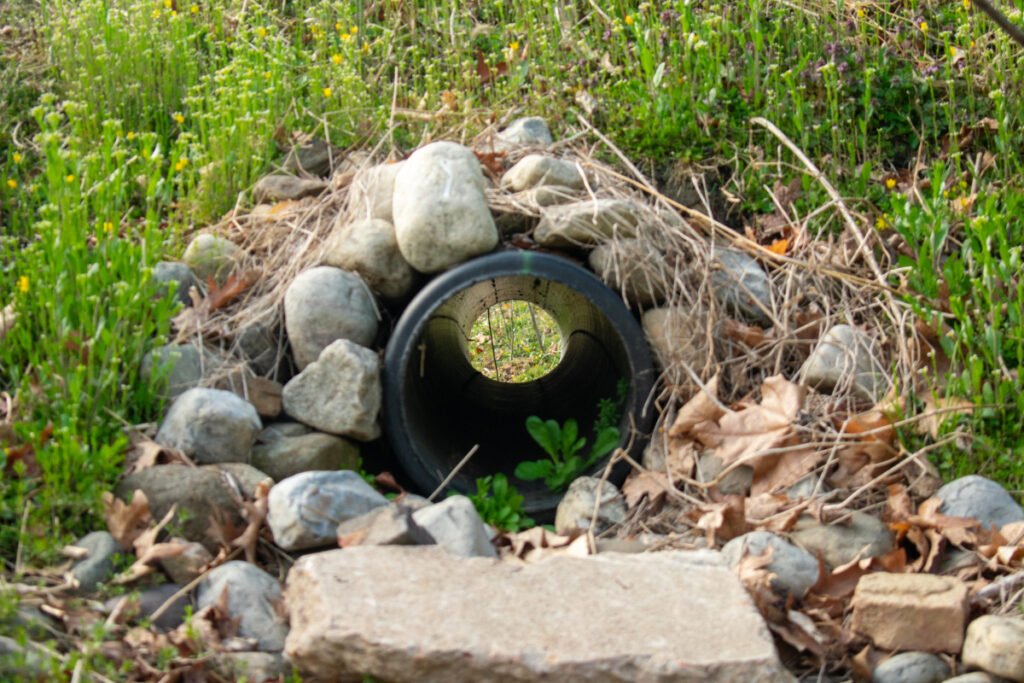
In simple terms, a french drain is a perforated pipe that absorbs water from the top, collects it, and discharges it to the surrounding gravel and low-lying areas. Thus, it catches the widespread surface flooding and channelizes it away from your basement waterproofing, retaining wall, and foundation.
In fact, a french drain has a steep slope, a flexible drain tile, and a coarse gravel cover that pushes the water away from the house using gravity. And it might even have a drainage fabric that keeps roots, soil, and other debris at bay.
Some Popular French Drain Applications:
- Solves underground basement and cellar drainage problem.
- Prevents water seepage near retaining wall and foundation.
- Drains the standing water from your gardens and lawns.
What Can Go Wrong with a French Drain?
French drains need a precise slope, mounting, and a lot of gravel and soil considerations before installation. And many homeowners try to DIY the drain to avert the heavy installation charges but might end up redoing it due to the wrong-sized trench, drain pipe, or approval.
So, let’s discuss all these common french drain mistakes in detail and save you from the financial and physical labor of starting all over again.
1. Misinterpreting the Zoning Regulations
A french drain trench is 4-6 feet deep; hence, it might interfere with various underground utility lines and services. Or, it might drain onto someone else’s site and face objections. So, you must interpret the site precisely.
Moreover, you’ll need to verify the strength of the soil, its draining capacity, and zoning before installing the drainage system.
In addition, every residential site in America is governed by specific homeowner’s associations. And, many people might make a mistake in conforming to the different zoning laws, drainage specifications, and community rules for the french drain installation, land into legal trouble, and have their drain flagged.
Some of the French Drain Installation Rules Are:
- The french drain’s runoff must be free from toxins, chemicals, and other affluents.
- The french drainage system must be at least 3 meters away from the footing of your home and must be reinforced to hold the excess water without deforming.
- The french drain trench must be 5-6 inches wide and 8-12 inches deep.
- Every french drain must have a backing of at least 12-13 inches of soil and gravel for better support and stability.
- Use simple one-and-a-half-inch gravel tubes to maintain optimal water flow without a perforated or corrugated pipe.
- Always drain your french drain into a nearby lake or pond or discharge it into any low-lying area that’s away from the main foundation.
Always call 811 to identify all the underground utilities in your area and determine the best route for a deep french drain. Additionally, you can verify the zoning and community rules from your local homeowners association. Or, you can use similar french drain alternatives that don’t need approval.
2. Working with the Wrong-Sized Gravel
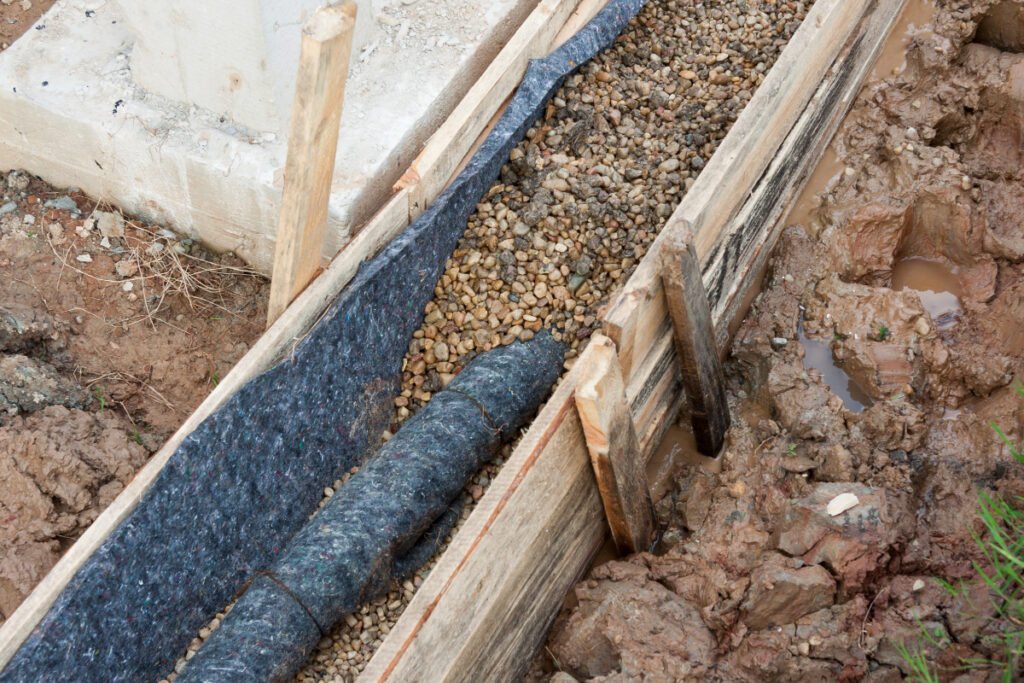
Wrong-sized gravel or crushed stone interferes with the permeability and reduces the water flow of any drainage system. Plus, it might chip, clog, and overload it considerably. So, always use a 1½ round or washed rock for the backfill and top it with a thin layer of soil for better water seepage.
Rocks to USE for a French Drain:
- Standard 1½-inch river rock
- Hard rocks like crushed granite or quartz
- Washed round rock
Rocks to AVOID for a French Drain:
- Small pea gravel or coarse sand
- Crushed stone or angular rock chips
- Soft rock like lime or sandstone
Get naturally rounded river stones from any river bed. These are lightweight and smooth and allow a greater water flow and drainage. Or, you can use a sock-wrapped drainage pipe with any regular gravel or stone if you do not have a river nearby.
3. Inadequate Slope
A french drain works on gravity. Hence, it needs a 1-2% slope for proper drainage and waterflow. However, people mistakenly install it in a flat position; thus, the drain clogs and backflow.
Moreover, a wrongly-sloped french drain pipe reduces the drainage speed and needs a sump pump to push water from the pipe.
Mount the french drain system on a naturally sloping part of your site or use a 1-foot drop to ensure that the water drains into a sump, catch basin, or any other drainage ditch.
4. Neglecting the Drainage Fabric
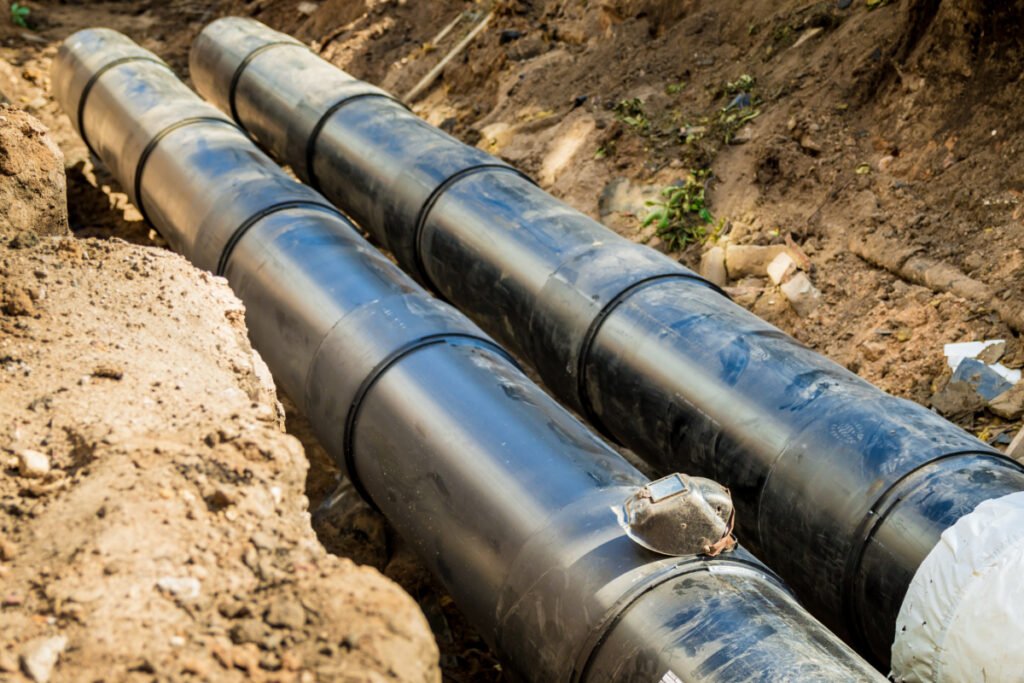
Drainage fabrics are nothing but simple, non-porous fabrics that separate the soil and prevent dirt and debris from entering your french drainpipe. However, many people often forget to align the fabric, and this causes the french drainage to clog or deform instantly.
Moreover, the landscape fabric keeps the grass roots and stones away from the drainage pipe and ensures an efficient water flow. So, don’t go wrong in using the drainage fabric and prefer standard 4-6 oz non-woven fabrics for an optimal french drain system.
Fabrics to Use for a French Drain:
- Woven linen strands
- Polypropylene or polyester
- Needle-punched or poly-spun geotextile fabric
Line the trench with sturdy landscape fabric and, if possible, overlap the pieces by about 12-13 inches for a proper water flow.
5. Using a Gravel-Only Drain
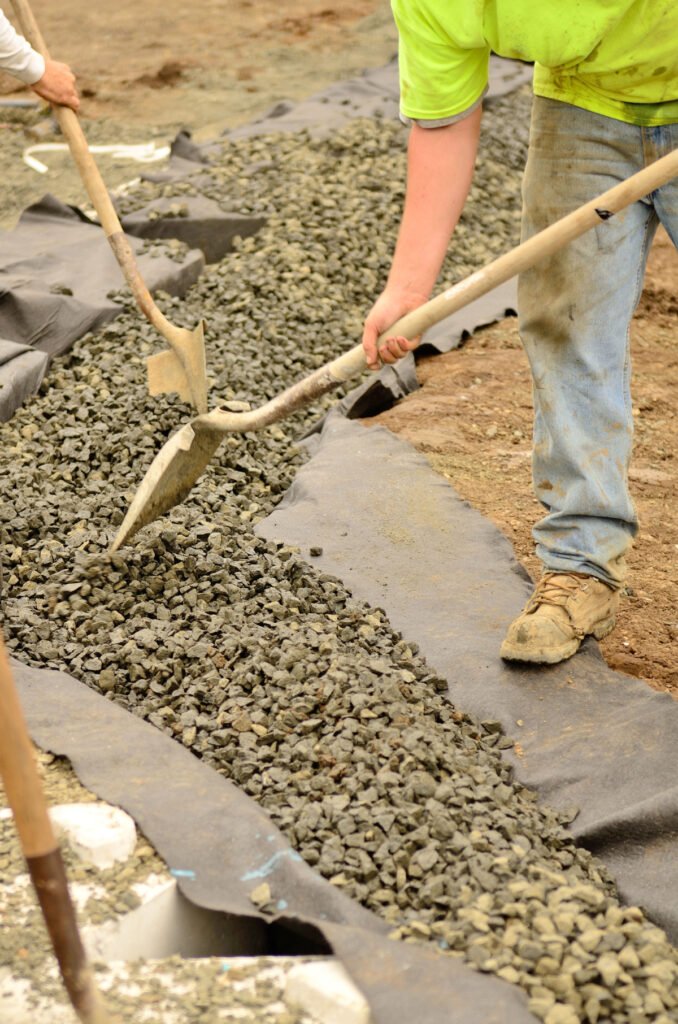
Most homeowners often install a french drain without a perforated pipe, reducing its overall flow rate and efficacy in preventing standing water and flooding. However, you must know that a gravel-only or trench drain seeps only a small quantity of water and might cause a drainage issue with heavy rainfall or snow.
Always install a 4-6 inch PVC perforated pipe under the gravel for a fast drainage solution in low-lying areas.
6. Discharging a Downspout into the French Drain
French drains can effectively drain your surface and landscape water, but you mustn’t overload them with the terrace and roof water from your downspouts. Downspouts might pressurize the walls of the french drain pipe and redirect the water back to the house, especially during heavy rain, thus disrupting the whole drainage system.
Install a catchbasin, curtain drain, or channel drain under the downspout and connect its overflow pipe to the french drain. This way, you won’t overflood the drain and eliminate all the loose leaves and twigs that might clog the pipe.
7. Pointing the Pipe Holes Sideways
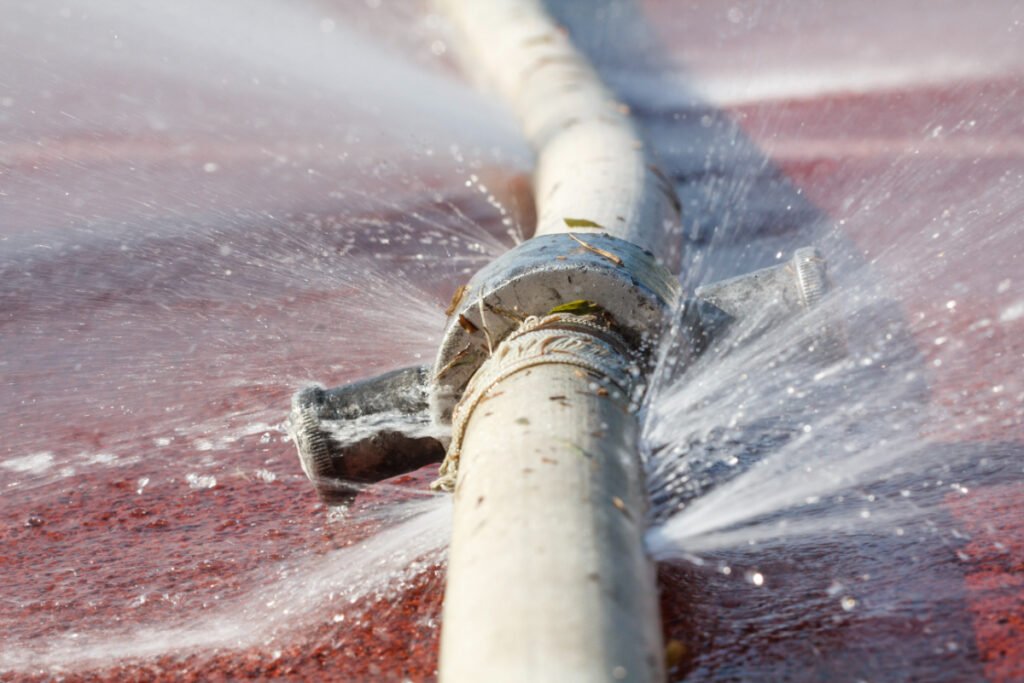
Perforated french drain pipes have uneven holes that ensure proper drainage and eliminate standing water in the drain system. However, many people think that pointing these holes in the top or sideways will improve the water flow to the pipe and carry it away from the house.
However, this is not the case. French drain holes must be faced downwards to get rid of all the excess water in the pipe and help it drain to the soil and gravel below. Plus, it will also help prevent clogging, blockages, and mildew attacks in the pipe.
Place the drain pipe in an inverted position with the holes at the bottom, and line it with hard gravel or river rock for better drainage.
8. Neglecting the Direction of Water Flow
It’s essential to assess the direction of water flow, the low-lying areas, and the general water discharge in your site when planning a french drain. Doing so will give you better clarity on the drain route and help plan the slope according to the natural water flow for efficient yard drainage.
Contact a professional site surveyor and refer to the water flow plan of your site to analyze the best possible route for your french drain. Additionally, you may connect it to different catch basins, and channel drains for a smooth flow.
9. Ending the Drain Right on Site
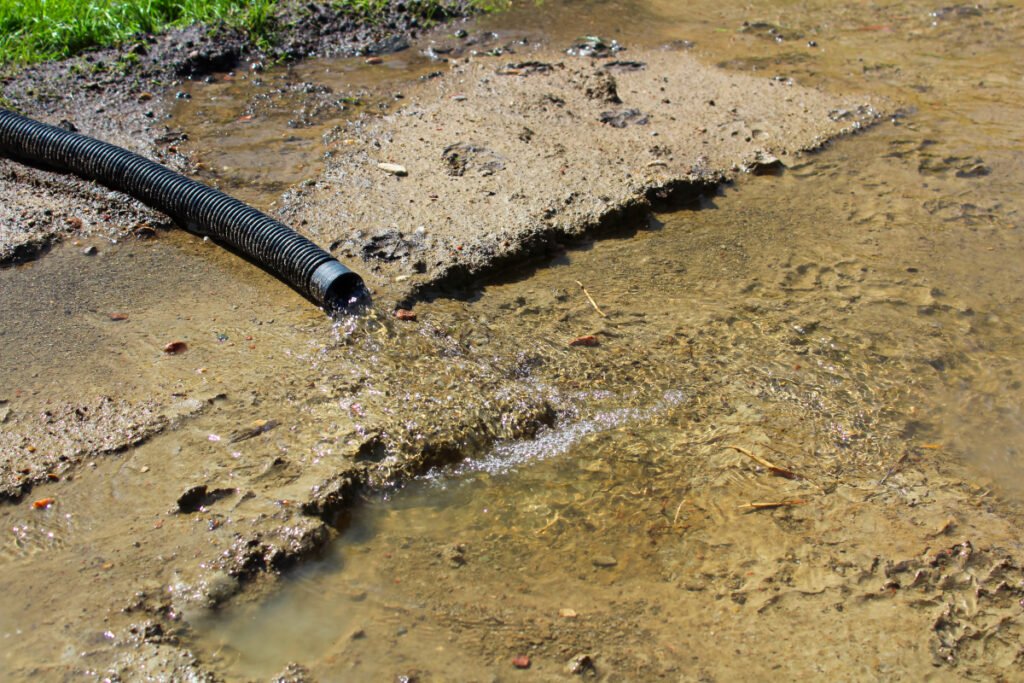
French drains need an appropriate exit point to any adjacent lake, drainage ditch, or low-lying area to prevent overflooding, backflow, and extra pressure on the trench walls. However, many people do not add a proper exit to the french drain and end it abruptly on the site.
And such a french drain will lead to more water accumulation and might cause marshy lands and water pools that disrupt your landscape.
Here Are Some Common Exit Points for a French Drain:
- Pump-pit: Pump-pits are nothing but large pits filled with crushed stone and gravel that direct water to the surrounding soil and prevent marshiness.
- Catch Basins: These are the central city storm drains that catch water and redirect it to the municipal sewer.
- Lakes, Ravines, or Woods: You can discharge your french drain pipe into any nearby lake or wood, but you must double-check the water safety and quality to prevent any harm to the ecosystem.
Hire professional site surveyors or geo-engineers to figure out the best possible exit for your french drain. Get it ecologically certified to prevent contamination fines or penalties.
10. Using Deep-root Grasses
You can cover your french drains with grass, but be smart and use shallow-rooted grasses that do not seep inside and block your drain. On the other hand, deep-rooted grasses may sink next to the pipe, erode it, and reduce the water flow. Plus, these roots favor mosquito breeding and are challenging to clean.
A List of Shallow-Rooted Grasses for Your French Drain:
- Turf grass
- Kentucky bluegrass
- Bentgrass
Use shallow-rooted grasses and add a drainage fabric and weeping tile to prevent the roots from percolating inside the drain pipe.
Problems with a Wrongly-Installed French Drain
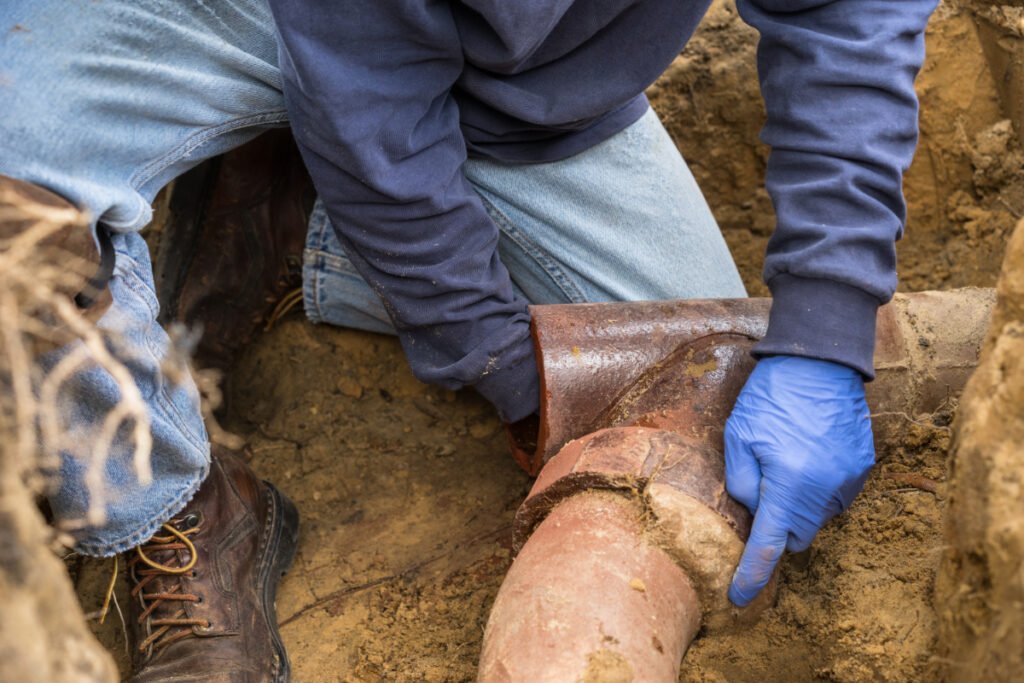
French drains need utmost precision and analysis before installation, and a wrongly sloped or installed drain might not only clog, flood and backflow back to the house but also cause an array of problems, as mentioned below:
- Clogging: A french drain can clog due to heavy deposition of dirt, sediment, or silt in its pipes and needs a steep slope for adequate drainage.
- Backflowing: Wrongly installed drains with an inappropriate exit overflood and backflow to the house or might cause marshiness in the low-lying areas of the site.
- Foul Smell: Inadequate slope leads to stagnant water within the french drain system and might lead to fungus and mold growth over time. Thus, the drain might smell like a sewer and cause water pooling.
- Mosquito Breeding: The absence of drainage fabric or gravel might lead to mosquito breeding in the drainage ditch and needs heavy drain cleaning from a professional plumber.
- Overflowing: French drains can overflow if they are directly connected to a downspout or a perimeter drain and cause water pooling in your landscape.
Do’s and Don’ts of French Drain Installation
Dos:
- Test the drain and flood it purposely to see how it handles excess water.
- Always fix the access or maintenance cell at the lowest drain point and add a grate to prevent debris from falling inside.
- Use a high-pressure water hose or jet to clean the drain and remove the clogs.
- Inspect the surrounding gravel or lawn to check for flooding and water damage.
- Add a weeping tile to prevent soil and sediment buildup in your drain.
- Add catchbasins at regular intervals to prevent surface flooding and buildup in your yard.
Don’ts:
- Don’t add flowering plants or shrubs along the french drain trench, as they may seep inside and block the drain.
- Avoid installing the drain too close to the basement walls as they might turn damp and aid mold growth.
- Don’t pour any abrasive cleaner or chemical down the drain.
- Don’t re-route a downspout or roof gutter directly into the drain.
- Don’t use a solid PVC or plastic pipe for a french drain.
- Don’t use fancy pebbles, aquarium salt, or crushed marble over your french drain.
What Causes a French Drain to Back Up?
In simple terms, a french drain backs up and overflows due to the absence of a drainage fabric or a thick gravel layer. The lack of a fabric coating adds to the soil and silt deposits inside the pipe, blocks the free flow of water, and causes flooding.
Why Does My French Drain Smell?
French drains smell due to excess stagnant water, mold, mildew, mosquito, or frog breeding in the pipe. However, you can tackle the scent by adding bleach, vinegar, or lime to your drain water or using a grate for filtration. Alternatively, you can even use a water heater to remove the mold from the outside.
Why Is My French Drain Not Draining?
A french drain might stop draining water due to significant clogs or blockages from silt, debris, tree roots, or poor quality, deformed pipes that reduce the overall water flow. In such a case, you can either clean the pipe with a high-pressure hose, use a sump pump or call a plumber to clean it.
How Deep Should a French Drain Be?
French drains must be about 18-24 inches deep in any regular backyard or paved area, but they should have a minimum depth of 2 – 6 feet along a single or multi-storeyed basement.
French drains are not only tedious to install, but they also need the proper slope, gravel cover, drainage fabric, and grass for optimal function and stunning visuals. Unfortunately, many DIY enthusiasts often go wrong in the installation and face the wrath of stinky pipes and overflowing and flooding landscapes.
But, we hope that all the above tips and quick solutions will help you install your drain without committing all those mistakes that might land you in trouble. And you can also check our related article on ‘French drain installation – 17 questions answered’ for more effective tips and tricks to help you out.

